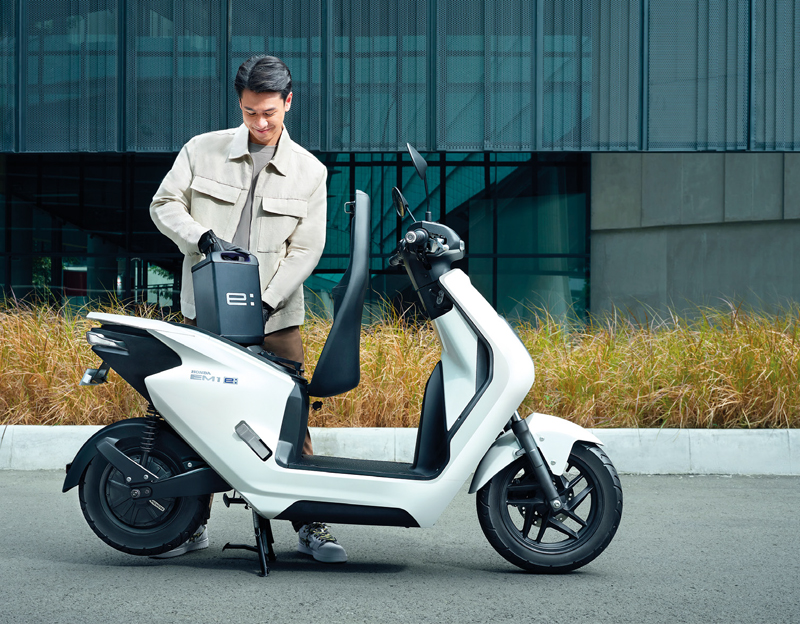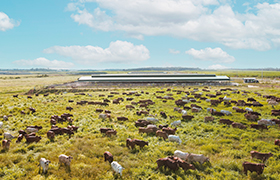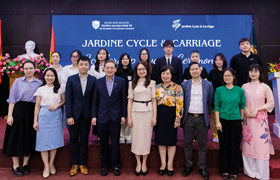Our Sustainability Governance
Read more
Our climate-related disclosures (“
Governance
A robust governance structure underpins the Group’s sustainability strategy, which includes climate-related risks and opportunities (“CRROs”). The Board meets five times a year whilst the ARC meets every quarter. Both the Board and ARC are informed about climate-related issues through presentations and information papers prepared by management. As such, the Board reviews and guides the Group’s strategy, risk management policies, annual budgets and business plans with climate considerations in mind, in accordance with the Board’s terms of reference. For major capital expenditure, acquisition and divestiture decisions, the Board takes into consideration the ESG due diligence assessment, which includes an analysis of the relevant CRROs and trade-offs. The Board level Nominating Committee is responsible for the selection and appointment of directors and identifies the mix of skills, qualities and experience required for the Board to function competently and efficiently. It is also responsible for reviewing and recommending training for the directors.
Supporting the oversight of CRROs is the management level Sustainability Committee, represented by the JC&C leadership team (i.e. Excom) and the heads of various internal functions.
The committee conducts CRRO assessments, develops goals and initiatives related to climate and decarbonisation, as well as monitors and reports on implementation and progress to the Board. JC&C’s enterprise risk management (“ERM”) framework also covers climate-related risks as further elaborated in the Risk Management section below. These controls and procedures help to ensure alignment with the overall business strategy. The Sustainability Committee is informed about climate-related issues through internal research conducted by the Sustainability Working Group and engagements with stakeholders. The Sustainability Working Group also helps to execute and manage the climate-related initiatives.
For details on our overall governance structure, refer to ‘Our Sustainability Governance’ on page 58.
Risk Management
JC&C’s ERM framework integrates the processes for identifying, assessing and managing all risks including climate-related risks, and adopts both top-down and bottom-up assessments. This involves evaluating risks at the Group-level factoring in the overall business strategy and objectives, as well as assessing risks at the operational level considering specific business units or processes. The process incorporates diverse data sources, including market trends, regulatory updates and expert insights, to provide a comprehensive foundation for our risk assessment process.
Our risk management processes aim to align these overarching objectives with robust risk mitigation measures. These processes are mapped out in our policies, which remained unchanged from the previous reporting period. These processes are also defined by detailed procedures, methodologies, evaluation criteria and documentation requirements.
Climate-related risks are identified in the process as described above. They include both acute and chronic physical risks as well as transition risks covering existing and emerging regulation or policy, legal, market, technology and reputation. The potential impact is evaluated based on the nature of the risk, its likelihood, financial impact, reputational damage and the velocity at which the risk materialises. JC&C manages the risk by taking one of four approaches – tolerate, terminate, transfer or treat – depending on the magnitude and scope of the risk. Climate-related risks are monitored on an ongoing basis. The progress and mitigation strategies are reviewed at the Board and ARC meetings.
The Group does not view the risks associated with climate change as a new risk category. The relevant significance and financial impact of climate-related risks in relation to other risks will be determined and prioritised in the manner described above.
Opportunities are embedded within our business strategies taken to mitigate the identified risks. For example, in managing our climate risks related to coal, we view diversifying towards noncoal minerals and renewables as an opportunity. Likewise in our automotive business, supporting the EV transition is another opportunity for us. We work together with our portfolio companies to assess, prioritise and monitor these opportunities; examples are provided in the subsequent Strategy section.
We comprehensively analyse CRROs when evaluating significant capital expenditure or new investment prospects. For instance, we closely monitor the emergence of new governmental and market regulations such as carbon taxes, to ensure that our insights and strategies are aligned with the evolving landscape of climate change impacts.
For more information on our risk governance structure and management framework as well as definitions of risk terminology used, refer to pages 47 to 50.
Strategy
In 2021, JC&C conducted a scientifically-based, top-down scenario analysis to understand the potential material financial impact of climate change to our investment portfolio. We chose two scenarios, namely, IEA WB2DS and IPCC RCP 4.5. The time horizons chosen were determined based on when we expect the risks to materialise in each scenario. Further details on the CRROs identified as well as its impact on our businesses, strategies and financial planning are elaborated in our SR2023.
| Scenario | Short-term | Medium-term | Long-term |
|---|---|---|---|
| Well-below 2°C (IEA WB2DS) | Now-2025 | 2025-2030 | 2030-2050 |
| Above 2°C scenario (IPCC RCP 4.5) | Now-2030 | 2030-2050 | Beyond 2050 |
During the year, we reviewed the results from our 2021 TCFD assessment and concluded that the identified CRROs continue to be applicable as our portfolio has not changed significantly. We continue to focus on the transition risks as they were found to have a larger financial impact in the near-term. The top two businesses that face the most transition risks are coal and automotive. Together, they make up over 50% of our underlying profit in 2023. To manage our risks, we have reviewed our strategies and revised our business and financial plans, with the intention to deploy significant capital to transition our businesses towards a low-carbon future.
For coal, we have been scaling up our investments in renewable energy as well as diversifying into non-coal mining. Over the past five years, from 2019 to 2023, we have deployed or approved over US$1 billion. The majority of the capital was strategically invested in nickel, a key transition metal needed in the production of EV batteries.
For automotive, we continue to work closely with our original equipment manufacturer (“OEM”) partners on their transition. In Singapore, we offer consumers a range of EV models through our brands Mercedes-Benz, Kia, Citroën and Maxus. In 2023, we brought on ORA, adding another EV brand to our product mix. In Indonesia, Astra has six battery EV models and 13 hybrid EV models under Toyota, Lexus and BMW as well as one battery-electric motorcycle model, the EM1 e, under Honda.

Honda’s battery-electric motorcycle, EM1 e
Our scenario analyses suggested that physical risks will become financially material in the longer term, with most of the impact felt around 2070. However, we saw in 2023 the increased occurrence of extreme weather events across the globe and given the unpredictability of natural disasters, we are taking precautionary measures to manage potential physical risks within our portfolio by ensuring that the businesses are procuring appropriate insurance as part of its risk management and building flood resilience measures at relevant sites.
In addition to the opportunities identified in the previous paragraphs, we continue to see renewable energy and related innovations in Indonesia and Vietnam as having the largest potential to drive impact and maintain the resiliency of our portfolio. Our ambition is in line with what was announced at COP28, where the conference called upon Parties to drastically increase the world’s renewable energy capacity by 2030. JC&C aims to generate an additional 1,000MW of renewable energy capacity from 2019 to 2030 and to-date we have generated almost 360MW of new capacity.
| Ambition | 2019 | 2020 | 2021 | 2022 | 2023 |
|---|---|---|---|---|---|
| Generate an additional 1,000MW of renewable energy capacity from 2019 to 2030* | 471MW (Baseline) |
598MW (+127MW) |
721MW (+250MW) |
803MW (+332MW) |
827MW (+356MW) |
Figures are accumulative
Metrics & Targets
As JC&C advances its efforts to address climate-related issues, we continue to monitor our climate-related performance. In addition to our metrics around investing in the low-carbon transition and generating additional renewables capacity as mentioned in the Strategy section, we are also closely monitoring and disclosing our Scope 1, 2 and 3 greenhouse gas (“GHG”) emissions. We measure our emissions in line with the GHG Protocol, using the operational control approach. More information on the measurement approach, inputs, assumptions and rationale as well as explanations for any changes will be detailed in our SR2023.
To instil accountability in our management’s pursuit of climate-related targets, specifically in the focus areas of decarbonisation and profit rebalancing, we integrate ESG considerations into their remuneration.
In 2022, we announced our commitment to reduce 30% of our net Scope 1 and 2 absolute emissions by 2030 from a 2019 baseline. In 2023, we have achieved over 10% reduction from the base year2. This was due to a combination of improving operational efficiencies, reducing fuel consumption, increasing the use of biodiesel and installing more solar panels and solar lamps.
Previously, we also started the process of quantifying the JC&C head office Scope 3 emissions. We began by disclosing Category 6 (business travel) and Category 7 (employee commuting). In 2023, we expanded to include Category 2 (capital goods), Category 3 (fuel and energy-related activities) and Category 4 (upstream transportation and distribution)3 from our head office. Our total head office Scope 3 emissions accounted for in 2023 is 561 tCO2e.
We have been working on our internal carbon pricing methodology and began piloting on some M&A transactions and capital expenditures throughout 2023. Our model assumptions are derived from a mixture of pricing from carbon regulations and market instruments. We will continue to improve our methodology through further studies and trials.
Moving forward, we plan to continue maximising our renewable energy generation on-site as well as exploring electrification and low-carbon solution opportunities. We look to continue providing progress updates on our targets as well as expanding our Scope 3 measurement and disclosures.
2 For Scope 1 and 2 GHG emissions, we cannot disaggregate the emissions between the consolidated accounting group and other investees as we follow the operational control approach. The parent and its consolidated subsidiaries contribute to 100% of Scope 1 and 2 emissions. Further details on the GHG emissions figures will be provided in our SR2023.
3 Category 4 emissions associated with upstream transportation and distribution is accounted for under Category 2 due to the methodology applied.


